For my last weekend in Nepal in late May, I joined Mich, Kate, and the family for a weekend vacation back at Chitwan National Park. Both Mich and Kate took Wednesday afternoon and Thursday off from their work, and Friday was a Nepal national holiday (Nepal National Republic Day; maybe you saw Google’s title design with a Himalayan Monal, the national bird). Monday was our Memorial Day, a national holiday for the US embassy employees – so voilà, we had a five-day weekend.
Kate and Mich chose Kasara Lodge, a more posh option than where Andrew and I had stayed four weeks earlier, and considering how much more time we actually spent on the grounds, and how important the swimming pool option was for the kids, it was a good choice. There was a large main swimming pool, but given that we were the only guests for the first two days (and perhaps Mich's contacts at the US embassy helped out), we were upgraded to a villa with a private pool.
Birding was actually quite good on the lodge grounds, as we were adjacent to a large tract of seasonally flooded community forest and grassland, which was contiguous with the national park. A large troop of Jungle Babblers frequented the grounds.
Black Drongos were always about, looking kind of like Great-tailed Grackles with the behavior of a pugnacious kingbird on a testosterone overdose. There wasn’t a bird they wouldn’t attack and chase, sometimes going after a Large-billed Crow or Black Kite high in the sky for several hundred meters.
We frequently heard an all black male Asian Koel singing his obnoxious song near our rooms, but seeing this speckled female was unusual.
Hearing a Ruddy Ground-Dove calling somewhere on the grounds was slightly eyebrow-raising, but I didn’t really pursue it until we heard it again at night, and Mich suggested it might be an owl. The next day we chased down the song again and found this Brown Boobook in a bamboo thicket.
This scorpion visited Kate and Mich’s open-air bathroom one evening, and I rescued it from them. Or them from it – I have no idea if this might be a species “of medical importance,” but chances are that it is not dangerous. Then again, it has rather slender pedipalps, often an indicator of a potent venom.
Mich spotted a waterscorpion (a harmless true bug in the family Nepidae, not an arachnid) at the reception area water feature, and it it’s always fun to get adorable Mara interested in little critters.
Her grandparents surprised Kate and Mich with these adorable toy binoculars, which she is very proud to use alongside her dad.
We all wonder whether Malcolm will be as interested in birds and wildlife as his dad.
I think this beetle that came to the night lights on the steps of our villa is in the family Lucanidae, the stag beetles.
This gorgeous green scarab looks like so many others in this huge family, I have no idea where to start – perhaps subfamily Rutelinae.
Over the course of the four and a half days here, we took two morning jeep rides into the national park just across the East Rapti River; Mich and I took a morning walking tour into the park; the whole family group took an afternoon canoe ride across the river and a short hike to the Gharial breeding center where Andrew and I had been a month earlier; the whole family took a couple of walks not far from the lodge; Mich and I took a short biking and birding ride through the farmland by the lodge; and we all took an afternoon drive to the 20,000 lakes area of the adjacent community forest. The following photos are from these varied outings.
Most of the national park is on the south side of the East Rapti River, and near our hotel a public highway to lands south of the park crosses it with a major bridge.
This is a Mugger Crocodile, common in the river; large ones can be dangerous to unwary humans.
We also crossed the river by this dugout canoe, being poled down the shallow river by two boatmen.
The forest and adjacent grasslands are part of a buffer zone, used intensely by the local people. They can’t graze their livestock here (elephants, cows, and water buffalo), but they do come here to cut it and haul it by hand.
Or by elephant.
This lady gleaning wood for cooking stopped to ask what Malcolm’s name was. In her place I would have hurried along just to rid myself of the heavy burden. I noticed her incredibly lean and muscular legs; she clearly does this a lot.
I was surprised when looked closely at this plant, which only barely stood out from the grasses it was growing amongst –it is an orchid, possibly Nervilia aragoana.
Several times we passed by this pond full of introduced water-hyacinths competing with these beautiful Indian Lotus flowers, Nelumbo nucifera.
I didn't realize this Terai Gray Langur was urinating as I snapped this photo.
This lizard is probably a female of the common Calotes versicolor, Oriental Garden Lizard.
This is an Indian Hog Deer, Hyelaphus porcinus, one of four species of Cervidae in the park.
We saw just this one Sambar, Rusa unicolor, the largest deer.
Indian Rhinoceros are scarce but well protected in Chitwan. We saw about eight during our long weekend.
This Red-wattled Lapwing chick in the road was nearly squished by our inattentive driver in the national park.
The only male Indian Peafowl we saw with a full complement of upper tail coverts; we saw lots of females and males that had lost their fancy plumes.
The pygmy-owl Jungle Owlet is astonishingly common in the national park and adjacent forest.
We saw only about three Oriental Pied-Hornbills, but at dawn our last morning morning one was singing loudly right over our villa.
I got to put Changeable Hawk-Eagle back onto my lifelist with a pair over a road in the park.
We had several drongo-cuckoos, and we’re still uncertain whether these should be called Square-tailed or Fork-tailed. The primary literature advocating this split seems to be in field guides and large family monographs, not papers in peer-reviewed journals.
The dominant forest type here is called Sal forest, after the very dominant species of tree. The understory is burned every two to three years, keeping it relatively open.
Indian Pitta turns out to be abundant in the Sal forest – we saw and heard well over 30 in about 2 hours driving through it on our last morning.
My lifer Himalayan Flameback, which seems to outnumber Greater Flameback (which was the only species I saw four weeks ago).
My lifer White-bellied Drongo – yet another species of drongo.
Mich and I were surprised to see a Long-tailed Broadbill here; they are more common in the hilly forest surrounding Kathmandu. Broadbills are suboscine passerines, distantly related to the dull, enigmatic Sapayoa found in wet tropical forests from Panama to Ecuador.
Mich’s lifer Oriental Honey-buzzard
Mich’s lifer Chestnut-capped Babbler. I had seen both of these on my first trip to Chitwan. It was so close and cooperative I took some video.
We identified this almost by default as a Crested Goshawk; it appears to be the only medium-sized Accipiter here this time of year.
We visited a couple wetland areas, which in the winter are much more productive for birding. These are Lesser Whistling-Ducks.
Gray-headed Swamphen – the same species that is now an established exotic in Florida (and considered countable by the American Birding Association).
Mich and I had repeated, excellent views of many Hirundapus swifts, and while we sometimes saw a slightly paler center to the throat, we could never make out a large, clean white throat that should be so obvious in White-throated Needletail, considered the default large swift in Nepal, according to the field guides. But our conclusion was that these had to be Silver-backed Needletails, known only from areas east and west of here. Swfits are hard.
This is Indian Grassbird. There are three species of birds called grassbird in Nepal, but this is the only one in Pelleornidae, the ground-babbler family.
A pair of Brown Fish-Owls that our vehicle flushed was a big surprise and a lifer for both Mich and me.
Some of the butterflies I saw:
One could spend a lot of time just photographing odonates here. One that was easy and cooperative was this probable Rhyothemis plutonia, the Greater Bluewing. I was amazed at its rocking behavior, which I had never seen a dragonfly do, so I got some video of it.
The lodge had some very nice mountain bikes, and Mich and I took off on the last hour and a half of daylight to bird the farmland and maybe find some patches of habitat.
This Indian Spotted-Eagle was soaring over the corn fields and was perhaps hoping to surprise a lapwing or crow.
We had seen many of the open country birds only while driving through to better habitats, so it was good to finally get good looks at Bengal Bushlark.
We were surprised by this Pied Cuckoo in this wide open landscape; both of us had seen it in Africa.
Perhaps our best find of the entire trip was in some shorter grassland by the river where we finished our bike ride. The Bristled Grassbird is considered vulnerable due to its vanishing habitat, and there are few sites known for it in Nepal. Unlike the Indian Grassbird, this one has a loud song, sings in flight, and is related to bush-warblers and grasshopper-warblers in the family Locustellidae. We were extremely lucky to stumble upon what appears to be a previously unknown location, with a pair just a five-minute bike ride from our lodge.



















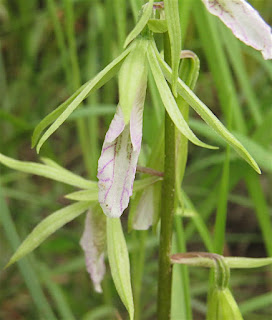
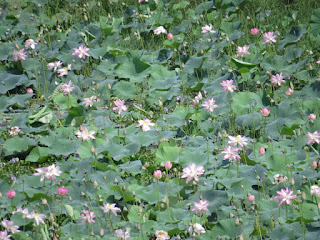


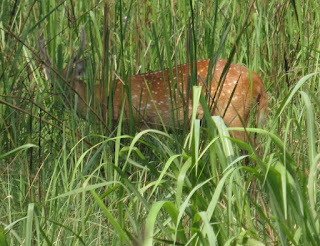















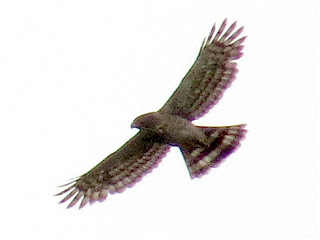















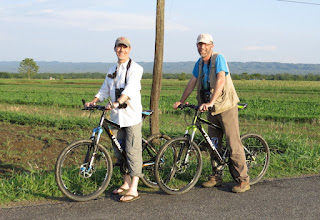












No comments:
Post a Comment